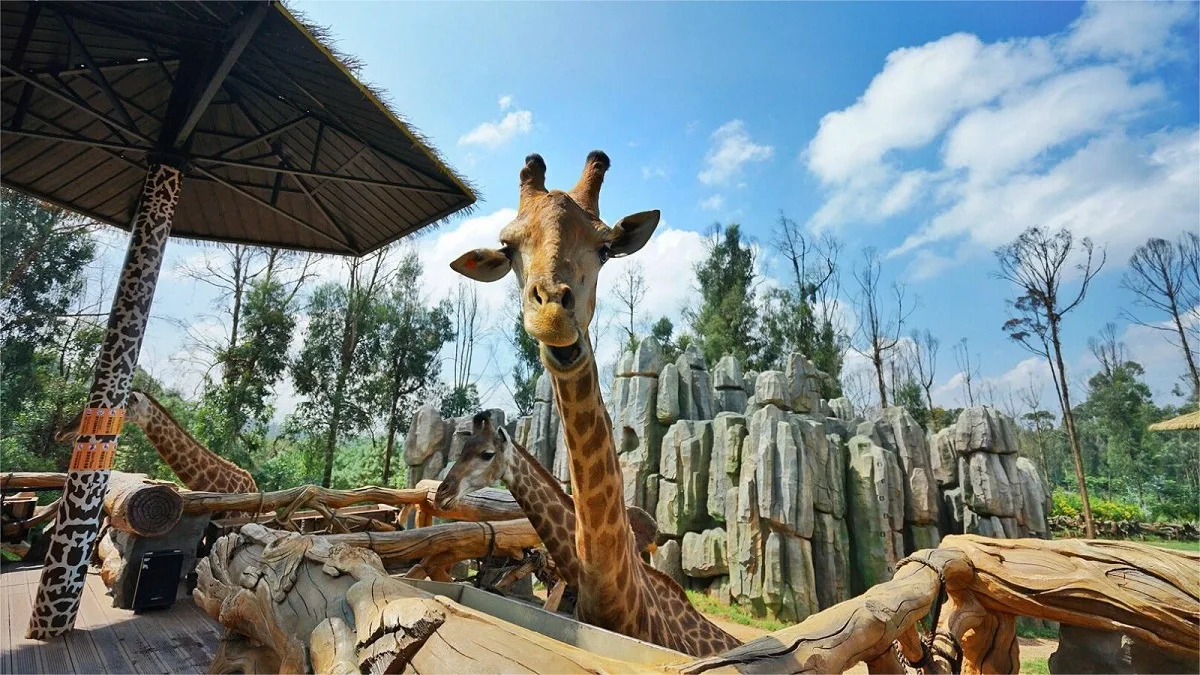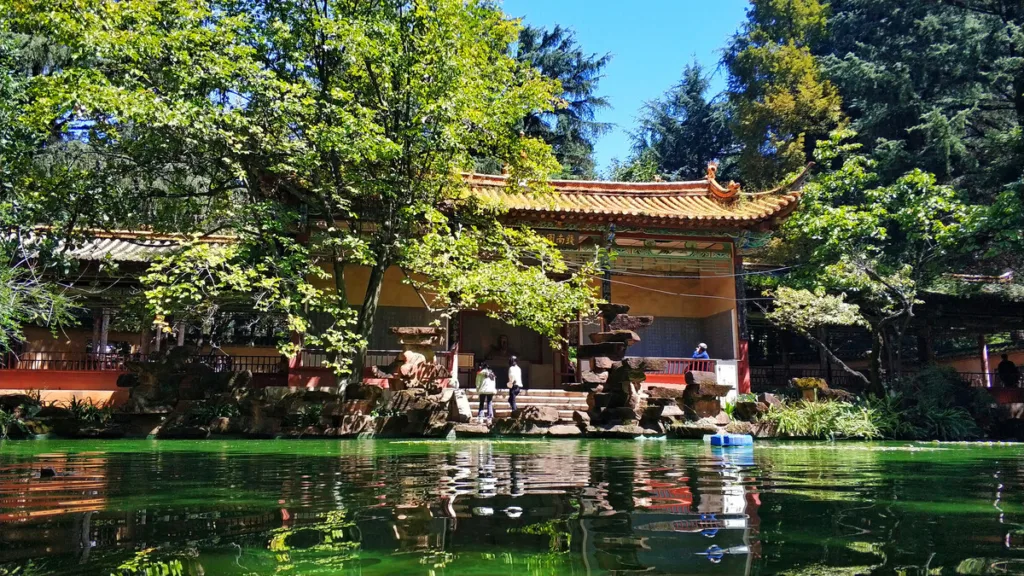Yunnan Wild Animal Park (云南野生动物园) opened its doors to the public on May 1, 2004. Encompassing an area of 2,800 acres, it showcases the diverse wildlife of Yunnan Province, earning the title of the “Animal Kingdom of Yunnan.” The park is home to over 200 species and more than 10,000 individual animals. Nestled amidst lush greenery and picturesque landscapes, it features themed areas such as the Rare Animal Zone, African Herbivore Zone, Giant Panda Pavilion, and Tiger and Lion Village.
Among the star attractions are national treasures like the giant pandas and golden snub-nosed monkeys. Visitors can also marvel at exotic creatures from distant lands, including giraffes, rhinoceroses, orangutans, and ostriches, many of which roam freely in naturalistic habitats within the park.
Visitors have the option to explore the park on foot or by taking a sightseeing tour on a designated vehicle. Adjacent to the peacock garden is a large animal performance arena, where guests can enjoy captivating shows featuring a variety of animals. This makes the park an ideal destination for families with children, offering both educational and entertaining experiences.
Table of Contents
- Basic Information
- Location and Transportation
- Highlights of Yunnan Wild Animal Park
- Vlog about Yunnan Wild Animal Park
- Attractions near Yunnan Wild Animal Park
Basic Information
| Estimated Length of Tour | Half a day |
| Ticket Price | Admission: 100 RMB Sightseeing Bus: 60 RMB |
| Opening Hours | 9.00 -16.30 |
| Telephone Number | 0086-0871-65018888 0086-0871-65017777 |
Location and Transportation
Yunnan Wild Animal Park is situated within the Jin Dian National Forest Park in Panlong District, Kunming City, Yunnan Province. It is approximately 7 kilometers away from the city center of Kunming. To get there, you can choose one of the following ways:
Bus: Take bus 235 or 241 and get off at Yunnan Wild Animal Park Stop (云南野生动物园站).
Metro: The closest metro station to Yunnan Wild Animal Park is North Bus Station (北部汽车站) on line 2. After getting out of the station, walk about 1.2 kilometers to the southeast or transfer to bus 150 to reach the zoo.
Highlights of Yunnan Wild Animal Park
Giant Panda Pavilion

The Giant Panda Pavilion is a highlight of the Yunnan Wild Animal Park, encompassing both indoor and outdoor areas tailored to the needs of these beloved creatures. The outdoor space spans 1400 square meters and is equipped with climbing frames, artificial rocks, misting systems, pools, sunshades, and bamboo structures, creating a naturalistic environment for the pandas. The pavilion also features abundant vegetation to mimic the pandas’ natural habitat. Meanwhile, the indoor area covers 324 square meters and includes designated pathways for the pandas, wooden sleeping platforms, climbing structures, artificial rocks, and pools. The seamless transition between indoor and outdoor spaces allows the pandas to move freely while maintaining optimal temperature conditions with central air conditioning.
African Tribal Zone

The African Tribal Zone recreates the living environment of primitive tribal chiefs in Africa, showcasing architectural styles inspired by African grasslands and tribal traditions. By integrating the primitive charm of African tribes, the zone offers visitors a glimpse into traditional African customs. For the first time in the park, seven species of animals, including giraffes, ostriches, rhinoceroses, zebras, impalas, lions, and more, are brought together to simulate the untamed wilderness of Africa. Visitors can immerse themselves in the authentic atmosphere of the African savanna and observe these magnificent creatures in habitats reminiscent of their natural homes.
Swan Lake

Surrounded by water on all sides, Swan Lake is home to a variety of wild avian species, including white swans, black swans, egrets, cormorants, geese, and wild ducks. The central water area teems with these majestic waterfowl, offering visitors a serene and picturesque scene. Adjacent to Swan Lake is the Reptile World Exhibition Garden, spanning over 200 square meters. Here, visitors can observe a diverse array of reptiles, including Burmese pythons, monitor lizards, frilled lizards, American green iguanas, Chinese water dragons, and alligators.
Herbivore Roaming Area

In the Herbivore Roaming Area, visitors can walk among and interact closely with a variety of herbivorous animals. Among them is the muntjac deer, characterized by its antler-like horns, camel-like neck, bovine-like hooves, and donkey-like tail. The area is also home to white and golden takins, often referred to as the “golden animals of the Andes Mountains.” Additionally, visitors can encounter species such as sika deer, Bactrian camels, and ostriches, among others. This section offers a unique opportunity for visitors to connect with these gentle herbivores in a natural setting.
Lion and Tiger Village

Designed with mountainous terrain and lush vegetation, Lion and Tiger Village provides an ideal habitat for these apex predators. More than 100 large carnivores, including white lions and Northeast tigers, roam freely within the village. Visitors can observe these majestic beasts prowling through the jungle, lounging by the water’s edge, or resting in the grasslands. The village features a circular elevated walkway, allowing visitors to view the animals from various angles and perspectives. This immersive experience provides a glimpse into the lives of these powerful predators in their natural environment.
Peacock Garden

The Peacock Garden is home to over 6,800 peacocks, including green, blue, and white varieties. Set against lush greenery, these majestic birds can be seen perching, resting, or leisurely strolling across the verdant lawns. Peacocks are distinguished by their vibrant plumage, with blue peacocks being the most numerous. They are native to India and can be found in various regions of China. The white peacock, a rare variant of the species, is also present in the garden, though in smaller numbers. Visitors to the Peacock Garden can marvel at the stunning beauty and grace of these iconic birds as they roam freely in their natural habitat.





